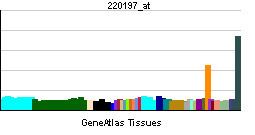Entrez 50617 | Ensembl ENSG00000105929 | |
 | ||
Aliases ATP6V0A4, A4, ATP6N1B, ATP6N2, RDRTA2, RTA1C, RTADR, STV1, VPH1, VPP2, ATPase H+ transporting V0 subunit a4 External IDs MGI: 2153480 HomoloGene: 39904 GeneCards: ATP6V0A4 | ||
V-type proton ATPase 116 kDa subunit a isoform 4 is an enzyme that in humans is encoded by the ATP6V0A4 gene.
Contents
Function
This gene encodes a component of vacuolar ATPase (V-ATPase), a multisubunit enzyme that mediates acidification of intracellular compartments of eukaryotic cells. V-ATPase dependent acidification is necessary for such intracellular processes as protein sorting, zymogen activation, receptor-mediated endocytosis, and synaptic vesicle proton gradient generation. V-ATPase is composed of a cytosolic V1 domain and a transmembrane V0 domain. The V1 domain consists of three A and three B subunits, two G subunits plus the C, D, E, F, and H subunits. The V1 domain contains the ATP catalytic site. The V0 domain consists of five different subunits: a, c, c', c'', and d. This gene is one of four genes in man and mouse that encode different isoforms of the a subunit. Alternatively spliced transcript variants encoding the same protein have been described. Mutations in this gene are associated with renal tubular acidosis associated with preserved hearing.
Interactions
ATP6V0A4 has been shown to interact with PFKM.
